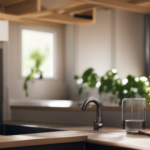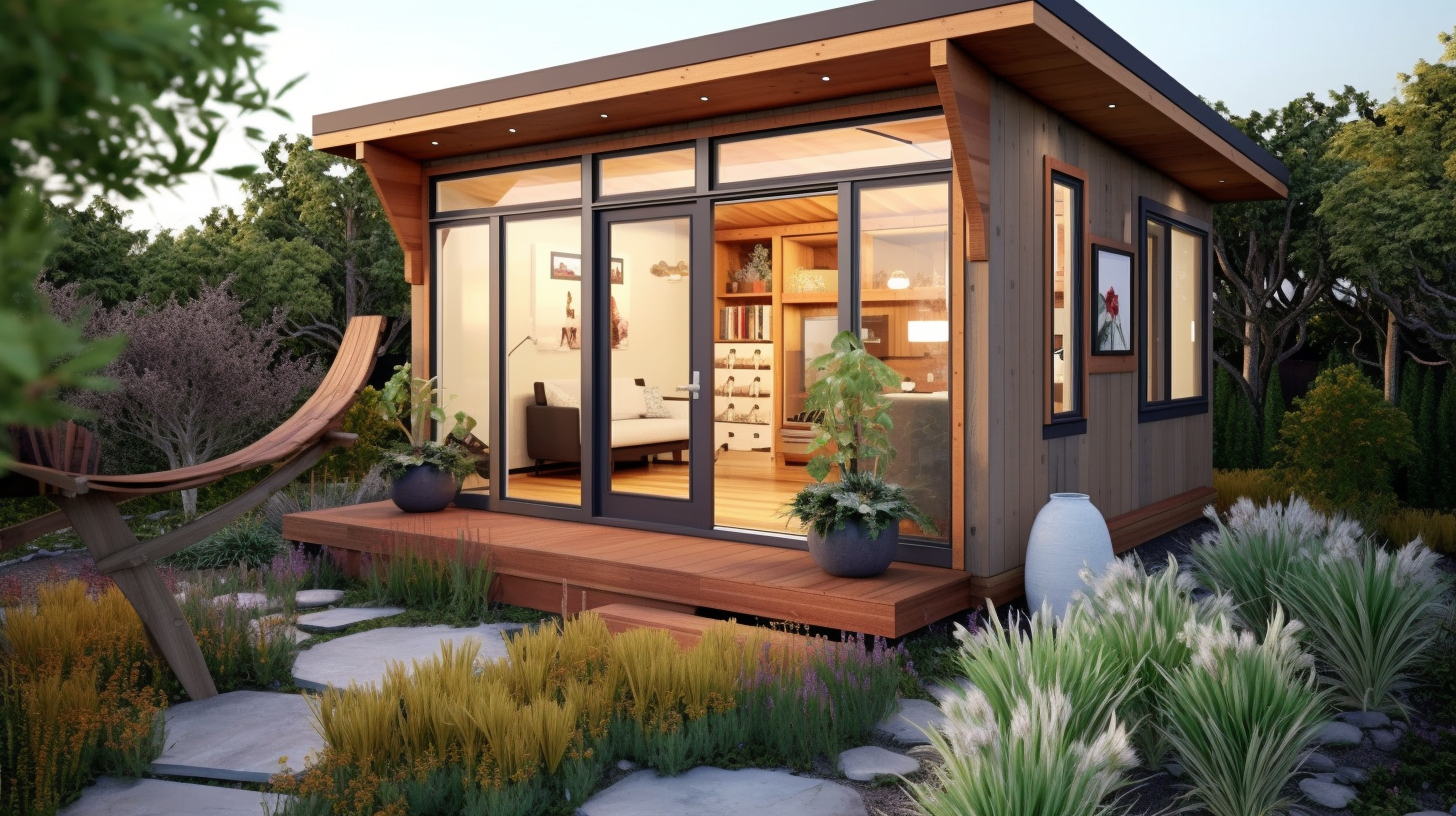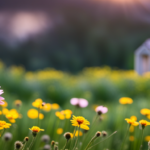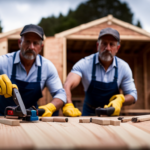Beginners Guides
How Much Does A Tiny House Cost To Build
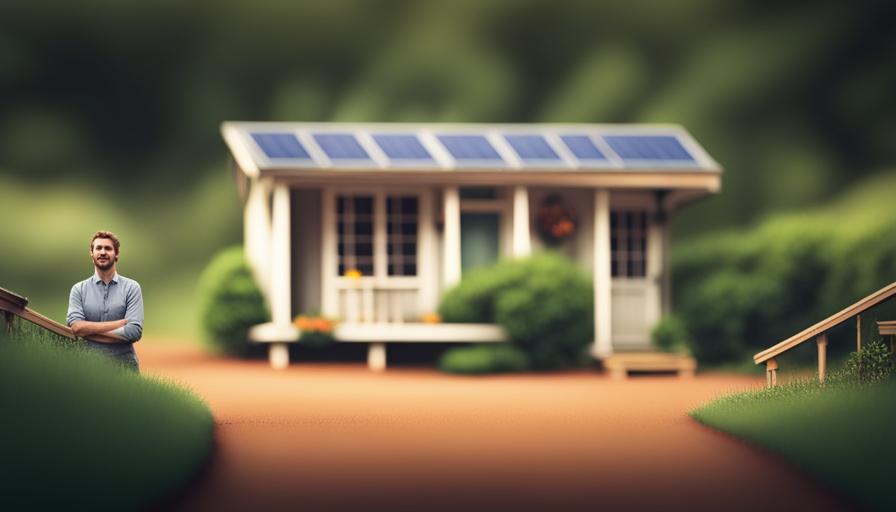
Constructing a small home might appear intimidating, yet it can be a thrilling and fulfilling project. Nevertheless, prior to commencing this journey, recognizing the financial aspects is crucial. Within this article, I aim to delve into the different elements that may influence the expense of creating a tiny house, alongside offering advice on managing finances, selecting building materials, and acquiring cost-effective property.
I will also delve into the hidden costs and unexpected expenses that may arise during the construction process. Additionally, I will discuss the importance of creating a sustainable and energy-efficient tiny house, as well as designing a space that is both functional and space-efficient.
Lastly, I will highlight the long-term cost savings and benefits of living in a tiny house. By the end of this article, you will have a comprehensive understanding of the financial aspects associated with building a tiny house.
Key Takeaways
- Building a tiny house can be a daunting but rewarding endeavor with cost implications that need to be understood.
- Factors such as size, materials, location, and labor all affect the cost of building a tiny house.
- Using affordable and sustainable materials, researching locations with lower expenses, and DIY work can significantly reduce costs.
- Understanding needs and priorities helps allocate the budget effectively, and incorporating reclaimed or recycled materials and energy-efficient features can save money in the long run.
Factors Affecting the Cost of Building a Tiny House
So, you’re probably wondering, ‘How much does it really cost to build a tiny house?’ Well, there are several factors that can affect the cost of building a tiny house. Let’s take a look at some budgeting tips and cost-saving strategies that can help you keep your expenses in check.
Firstly, the size of your tiny house will play a significant role in determining its cost. The smaller the house, the less materials and labor will be required, resulting in lower costs. Additionally, the choice of materials and finishes can greatly impact the overall expense. Opting for more affordable and sustainable materials, such as reclaimed wood or recycled materials, can help you save money.
Another important factor to consider is the location where you plan to build your tiny house. Different areas have different costs associated with permits, land, and utilities. Researching and choosing a location with lower expenses can help you stay within your budget.
Furthermore, doing some of the work yourself can significantly reduce costs. Whether it’s painting, flooring, or installing fixtures, taking on some of the tasks can save you money on labor costs.
Incorporating these budgeting tips and cost-saving strategies can help you build your tiny house within your desired budget. Transitioning into the subsequent section about budgeting for your tiny house project, it’s important to carefully plan and allocate your funds to ensure a successful and affordable build.
Budgeting for Your Tiny House Project
When budgeting for your project, it’s important to note that the average price of a fully constructed tiny home is around $60,000. However, there are several budgeting tips and cost-saving strategies that can help you bring down the overall cost of building your tiny house.
Firstly, it’s crucial to have a clear understanding of your needs and priorities. Determine the essential features and materials that you absolutely need, and be willing to compromise on less important aspects. This will help you allocate your budget more effectively.
Another cost-saving strategy is to consider using reclaimed or recycled materials. Salvaging materials from old buildings or repurposing items can significantly reduce costs without compromising on quality. Additionally, doing some of the labor yourself can save you money. However, it’s important to be realistic about your skills and abilities to avoid costly mistakes.
Incorporating energy-efficient features into your tiny house can also save you money in the long run. Investing in insulation, solar panels, and energy-efficient appliances can help reduce utility costs over time.
When it comes to the subsequent section about ‘diy vs. hiring professionals’, it’s important to carefully consider your skills, time availability, and budget constraints before making a decision.
DIY vs. Hiring Professionals
Opting for a do-it-yourself approach or hiring professionals involves careful consideration of one’s skills, time availability, and financial constraints. When it comes to building a tiny house, both options have their own set of benefits and advantages.
DIY offers the opportunity to save money on labor costs and allows for complete customization. By taking on the project yourself, you have full control over the design and can incorporate unique features that suit your specific needs and preferences. Additionally, DIY allows for a sense of accomplishment and pride in building your own home. However, it’s important to note that DIY requires a certain level of construction skills and knowledge. It’s crucial to be realistic about your abilities and seek professional help for tasks that are beyond your expertise.
On the other hand, hiring professionals can provide several advantages. They have the experience and expertise to ensure that the construction process is done efficiently and to code. Professionals also have access to a network of suppliers and contractors, which can save you time and ensure quality materials are used. Hiring professionals can also minimize the risk of costly mistakes and delays. However, it’s important to carefully research and choose reputable professionals to ensure the best outcome for your tiny house project.
When it comes to choosing the right materials and appliances for your tiny house, careful consideration of your needs and budget is essential.
Choosing the Right Materials and Appliances
To make sure your tiny home is equipped with the best materials and appliances, you need to carefully consider your needs and budget. Choosing sustainable materials is not only environmentally friendly, but it can also save you money in the long run. Look for materials that are durable, energy-efficient, and sourced responsibly. For example, using reclaimed wood for your flooring or countertops adds character to your tiny house while reducing waste. Additionally, consider installing efficient appliances and fixtures to further decrease your energy consumption. Energy Star-rated appliances, low-flow toilets, and LED lighting are all excellent choices for a sustainable and cost-effective tiny home.
To help you make informed decisions, here is a comparison of different materials and appliances:
| Materials | Pros | Cons |
|---|---|---|
| Reclaimed wood | Eco-friendly, unique appearance | Limited availability |
| Bamboo flooring | Sustainable, durable | Can be expensive |
| Recycled metal roofing | Long-lasting, energy-efficient | Higher initial cost |
| Low-E windows | Energy-efficient, reduce heat | Higher upfront investment |
| Solar panels | Renewable energy, cost savings | Initial installation cost |
By carefully selecting sustainable materials and efficient appliances, you can create a comfortable and environmentally responsible tiny home. Next, we will explore the process of finding affordable land for your tiny house without compromising on location or amenities.
Finding Affordable Land for Your Tiny House
When it comes to finding affordable land for my tiny house, there are a few key points that I need to consider.
First, I need to decide whether buying or renting land is the best option for me.
I also need to be aware of zoning and legal considerations in order to ensure that I’m complying with all regulations.
Lastly, I can explore the option of joining a tiny house community or co-living opportunity, which can offer shared resources and a sense of community.
Buying vs. Renting Land
Did you know that renting land for your tiny house can cost you up to 30% of your monthly income? When it comes to finding affordable land for your tiny house, you have two main options: buying or renting. Let’s take a look at the pros and cons of each.
Buying Land:
- Ownership: One of the biggest advantages of buying land is that you become the owner, giving you more control over your living situation.
- Investment: Buying land can be a good long-term investment, as the value of the property may appreciate over time.
- Freedom: Owning land allows you to make changes and modifications to the property without seeking permission from a landlord.
Renting Land:
- Flexibility: Renting land provides more flexibility, as you can easily move to a different location if you decide to change your surroundings.
- Lower upfront costs: Renting land requires less upfront investment compared to buying, making it a more affordable option in the short term.
- Less responsibility: Renting land means you’re not responsible for maintenance and repairs, which can save you time and money.
Considering the pros and cons of buying vs. renting land, it’s important to weigh your options carefully before making a decision.
Now, let’s explore the next section about zoning and legal considerations.
Zoning and Legal Considerations
Consider the zoning and legal requirements you’ll need to navigate when determining the location for your tiny house. Zoning restrictions vary from place to place, so it’s crucial to research and understand the specific regulations in your desired area.
Some areas may have minimum square footage requirements or restrictions on the placement of tiny houses on wheels. Additionally, you may need to obtain certain legal permits before you can start building. These permits could include building permits, electrical permits, or plumbing permits, depending on the complexity of your tiny house.
It’s important to factor in the time and cost associated with obtaining these permits when budgeting for your tiny house project. Understanding the zoning and legal considerations will help ensure that you choose a location that is compliant and suitable for your tiny house.
This brings us to the next section about tiny house communities and co-living opportunities.
Tiny House Communities and Co-Living Opportunities
After exploring the zoning and legal considerations of building a tiny house, let’s dive into the exciting world of tiny house communities and co-living opportunities. Living in a tiny house doesn’t mean living in isolation; there are vibrant communities where like-minded individuals come together to support and uplift each other.
Here are four reasons why co-living in a tiny house community can be incredibly beneficial:
-
Shared resources: From communal kitchens to shared tools, co-living allows for efficient resource utilization.
-
Emotional support: Living among people who understand the challenges and joys of tiny house living provides a strong support network.
-
Social connections: Tiny house communities foster a sense of belonging and offer opportunities for meaningful friendships.
-
Learning and growth: Sharing space with others exposes you to diverse perspectives and life experiences, promoting personal development.
Now, let’s explore how living in a tiny house community can help you save money on your tiny house construction.
Saving Money on Tiny House Construction
To save money on constructing your tiny house, you can opt for pre-owned materials, which can reduce costs by up to 50%. By purchasing used materials, such as doors, windows, flooring, and even appliances, you can significantly cut down on your construction expenses.
Many people find great deals on websites, salvage yards, or local classifieds where individuals sell their leftover building materials from previous projects. Additionally, you can consider repurposing items from your own home or even asking friends and family if they have any unused materials that you could use.
Another cost-effective construction method is to do as much of the work as possible yourself. While it may require some extra time and effort, taking on tasks like painting, installing fixtures, or even building furniture can save you a substantial amount of money in labor costs. Additionally, enlisting the help of friends or family members who have construction experience can be a great way to cut down on expenses while still ensuring quality work.
By incorporating these budgeting tips and cost-effective construction methods, you can keep the overall cost of building your tiny house to a minimum. However, it’s important to keep in mind that there are still hidden costs and unexpected expenses that may arise during the construction process.
Hidden Costs and Unexpected Expenses
When building your compact dwelling, it’s imperative to be mindful of unforeseen expenditures and concealed fees that may arise throughout the construction process. Hidden costs and unexpected expenses can quickly add up and blow your budget if you’re not prepared.
One of the most common hidden costs is the need for specialized permits and inspections that may be required for your tiny house. These requirements vary by location, so it’s important to thoroughly research the regulations in your area before starting construction.
Additionally, unexpected expenses can arise from unforeseen structural issues or complications during the building process. It’s crucial to have a contingency fund set aside for these situations to avoid financial strain.
Other hidden costs to consider include land preparation, utility hookups, and interior finishes.
By being aware of these potential expenses and planning accordingly, you can avoid unnecessary financial stress and setbacks.
Transitioning into the subsequent section about creating a sustainable and energy-efficient tiny house, it’s important to consider the long-term benefits and savings that come with incorporating eco-friendly features into your design.
Creating a Sustainable and Energy-Efficient Tiny House
Designing a sustainable and energy-efficient tiny home can lead to long-term savings and environmental benefits. When it comes to building a tiny house, choosing sustainable building materials is essential.
Opting for materials such as reclaimed wood, recycled metal, and non-toxic insulation not only reduces the environmental impact but also promotes healthier indoor air quality. These materials may have a higher upfront cost, but they’re durable and require less maintenance in the long run.
In addition to sustainable materials, selecting energy-efficient appliances is crucial for reducing energy consumption in a tiny house. Energy Star-rated appliances, such as refrigerators, stoves, and HVAC systems, use less energy without compromising functionality. Installing LED lighting fixtures throughout the house can also significantly reduce electricity usage.
By incorporating sustainable building materials and energy-efficient appliances into the design of a tiny house, homeowners can save money on utility bills and minimize their ecological footprint. These choices not only benefit the environment but also contribute to a more comfortable and healthy living space.
Moving forward, designing a functional and space-efficient tiny house allows for maximizing the available square footage without sacrificing comfort or functionality.
Designing a Functional and Space-Efficient Tiny House
Create a cozy and well-organized living space in your tiny home that maximizes every square inch, allowing you to effortlessly flow from one functional area to another.
To achieve this, it’s essential to focus on maximizing storage and optimizing the layout. Here are four key elements to consider:
-
Built-in Storage Solutions: Incorporate clever storage solutions such as hidden compartments, under-stair storage, and wall-mounted shelves to make the most of vertical space and keep your tiny home clutter-free.
-
Multi-Functional Furniture: Invest in furniture that serves multiple purposes, like a sofa that can be transformed into a bed or a coffee table with built-in storage compartments. This way, you can save space while still having all the essential pieces you need.
-
Open Floor Plan: Opt for an open floor plan that allows for seamless movement between different areas. Avoid unnecessary walls or partitions that can make your tiny home feel cramped and restrict natural light flow.
-
Efficient Kitchen Design: Design your kitchen to maximize functionality and storage. Utilize compact appliances, install ample countertop space, and consider utilizing vertical space with hanging utensil racks or shelves.
By implementing these strategies for maximizing storage and optimizing layout, you can create a functional and space-efficient tiny home. This thoughtful design will not only enhance your daily living experience but also contribute to long-term cost savings and benefits of living in a tiny house, which we will explore in the next section.
Long-Term Cost Savings and Benefits of Living in a Tiny House
Living in a tiny house offers several long-term cost savings and benefits. Firstly, reduced utility bills and expenses are a major advantage, as the smaller space requires less energy to heat, cool, and light.
Secondly, the minimalist lifestyle that comes with living in a tiny house promotes financial freedom, as it encourages us to prioritize experiences and relationships over material possessions.
Lastly, the positive environmental impact cannot be overlooked, as a smaller living space means less waste, a lower carbon footprint, and a greater appreciation for sustainable living practices.
Reduced Utility Bills and Expenses
One major advantage of a tiny house is that it significantly reduces utility bills and expenses. By embracing a minimalist lifestyle and incorporating energy-saving strategies, tiny house owners can greatly reduce their carbon footprint and save on monthly bills.
With a smaller space to heat, cool, and light, energy consumption is significantly reduced. Many tiny house owners opt for renewable energy sources such as solar panels, further decreasing their reliance on traditional utilities. Additionally, the reduced square footage means less maintenance and fewer repairs, resulting in lower expenses in the long run.
These cost savings allow tiny house dwellers to have more financial freedom and flexibility. Transitioning to the subsequent section, the reduced expenses and simpler lifestyle of tiny house living also contribute to a minimalist lifestyle and financial freedom.
Minimalist Lifestyle and Financial Freedom
By embracing a minimalist lifestyle in a tiny house, individuals can experience financial freedom. For example, Sarah was able to quit her job and pursue her passion for writing because her reduced expenses allowed her to live comfortably off of a part-time income. This lifestyle choice not only allows for a more intentional approach to financial planning but also encourages individuals to simplify their possessions and prioritize what truly matters.
Here are four ways in which a minimalist lifestyle in a tiny house can lead to financial freedom:
-
Reduced housing costs: Tiny houses are significantly cheaper to build and maintain compared to traditional homes, freeing up funds for other expenses or savings.
-
Lower utility bills: With a smaller space to heat, cool, and power, utility bills are drastically reduced, providing extra money to allocate towards other financial goals.
-
Minimalist mindset: Living with less encourages a mindset of mindful spending and avoiding unnecessary purchases, resulting in more significant savings over time.
-
Debt reduction: By downsizing their living space and possessions, individuals can better manage their finances and pay off debts more quickly.
By adopting a minimalist lifestyle in a tiny house, not only can individuals achieve financial freedom, but they can also have a positive environmental impact.
Positive Environmental Impact
Embrace a minimalist lifestyle in a tiny house and you’ll quickly notice the positive environmental impact it has on your surroundings. Living in a tiny house encourages conscious consumption and reduces waste. With limited space, you become more mindful of your belongings and only keep what’s necessary.
The eco-friendly design of a tiny house also contributes to its positive impact on the environment. Many tiny houses are built using sustainable materials, such as reclaimed wood and recycled materials, minimizing the use of new resources. Additionally, these houses often incorporate energy-efficient features like solar panels and composting toilets, reducing the overall carbon footprint.
By choosing to live in a tiny house, you’re making a positive contribution to the environment and promoting a more sustainable way of living.
Frequently Asked Questions
What are some common mistakes to avoid when building a tiny house?
One common mistake when building a tiny house is overlooking the importance of proper insulation, leading to discomfort and higher energy bills. Another design tip is to maximize storage space through creative solutions like built-in furniture and hidden compartments.
Are there any special permits or licenses required to build a tiny house?
Yes, there are special permits and licenses required to build a tiny house. Building regulations, zoning restrictions, and legal requirements vary by location, so it’s important to research and comply with local laws.
How long does it typically take to build a tiny house?
Building a tiny house is like a never-ending adventure! The construction process can take anywhere from a few weeks to several months, depending on your building skills, available time, and the level of customization. It’s a labor of love, but oh so worth it!
Can a tiny house be financed like a traditional home?
Yes, financing options are available for tiny houses. However, loan requirements may vary depending on the lender. It’s important to research and compare different options to find the best fit for your needs.
What are some key design considerations for maximizing storage in a tiny house?
Maximizing storage in a tiny house requires creative solutions and multi-functional furniture. Consider built-in shelving, hidden compartments, and furniture with storage capabilities. Utilize vertical space and utilize every nook and cranny for efficient storage.
Conclusion
Well, after all that research and planning, it turns out that building a tiny house isn’t as cheap as you might think. The cost of materials, labor, and all those little hidden expenses can really add up. But hey, who needs money anyway? Living in a tiny house means you can enjoy the luxury of a cramped and minimalist lifestyle while pretending to save the planet. So go ahead, spend all your savings on a tiny house and revel in the irony of it all.
Hi, I’m Emma. I’m the Editor in Chief of Tiny House 43, a blog all about tiny houses. While tree houses are often associated with childhood, they can be the perfect adult retreat. They offer a cozy space to relax and unwind, surrounded by nature. And since they’re typically built on stilts or raised platforms, they offer stunning views that traditional homes simply can’t match. If you’re looking for a unique and romantic getaway, a tree house tiny house might just be the perfect option.
Beginners Guides
How Did the City of Fresno to Tiny House

As someone living in Fresno, I have always believed in the saying ‘home is where the heart is.’ Thanks to the city’s forward-thinking housing policies, even the smallest of homes can now have a place to call their own.
In this article, we’ll explore how Fresno has embraced the tiny house movement, collaborating with advocates and implementing innovative zoning regulations. Join me as we delve into the challenges faced and the remarkable progress made towards building a thriving tiny house community in Fresno.
Key Takeaways
- Fresno has implemented housing policies and initiatives aimed at increasing access to affordable housing, including energy-efficient homes and tiny house construction.
- Collaboration with tiny house advocates is crucial for effective housing solutions, as they bring valuable insights and innovative ideas to the table.
- Zoning regulations and permitting processes in Fresno are designed to engage the community and ensure that their needs and preferences are considered.
- Fresno has created innovative tiny house communities that focus on sustainability and affordability, incorporating features such as solar panels and rainwater harvesting systems.
The Shift in Housing Policies
I’m excited to talk about the changes happening in housing policies.
One of the most pressing issues in our society today is housing affordability. Many individuals and families struggle to find affordable housing options, causing financial strain and instability.
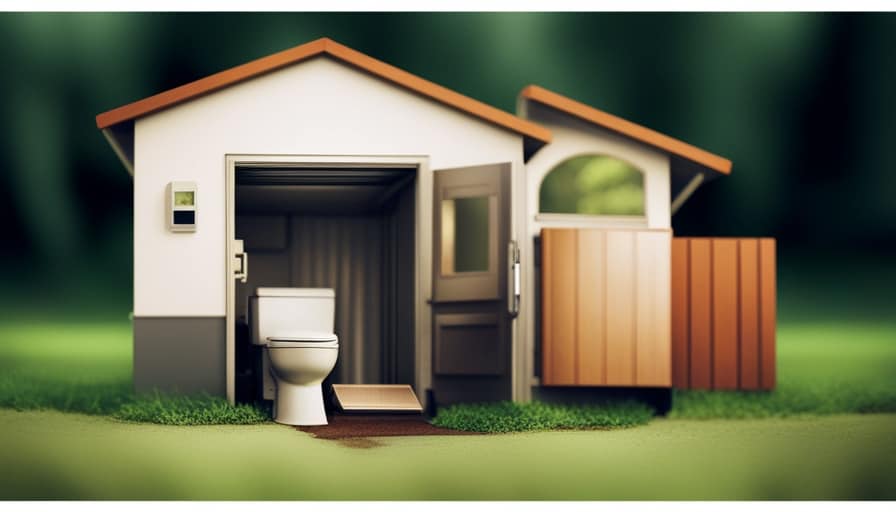
As a result, there’s been a shift in housing policies towards promoting sustainable living and increasing access to affordable housing. Governments and organizations are recognizing the importance of creating housing opportunities that are both environmentally friendly and economically viable.
This involves initiatives such as promoting energy-efficient homes, supporting the construction of tiny houses, and implementing rent control measures.
Collaborating With Tiny House Advocates
Collaborating with tiny house advocates has been crucial in implementing effective housing solutions in the city of Fresno. Through collaboration strategies and community engagement, we’ve been able to work hand in hand with advocates to address the unique challenges and opportunities that tiny houses present.
These collaborations have allowed us to tap into the knowledge and expertise of tiny house advocates, who bring valuable insights and innovative ideas to the table. We’ve engaged in open and transparent dialogues, fostering a sense of trust and understanding between all parties involved.
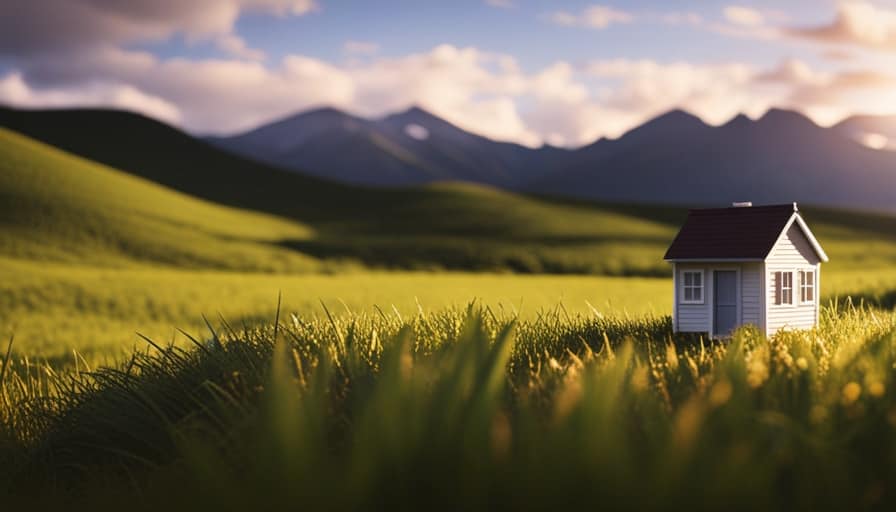
Zoning Regulations and Permitting Processes
Navigating the complexities of zoning regulations and permitting processes can be challenging, but it’s essential for ensuring the successful implementation of tiny house communities in the city of Fresno.
To streamline processes and make it easier for individuals and organizations to develop tiny house communities, the city of Fresno has taken steps to engage with the community and actively involve them in the decision-making process.
This includes hosting public meetings, soliciting feedback, and conducting thorough assessments of potential sites for tiny house communities. By involving the community in these processes, the city of Fresno can address any concerns or issues that may arise, while also ensuring that the needs and preferences of the community are taken into consideration.
This collaborative approach not only helps to build trust and support, but also allows for a more efficient and effective implementation of tiny house communities in the city.
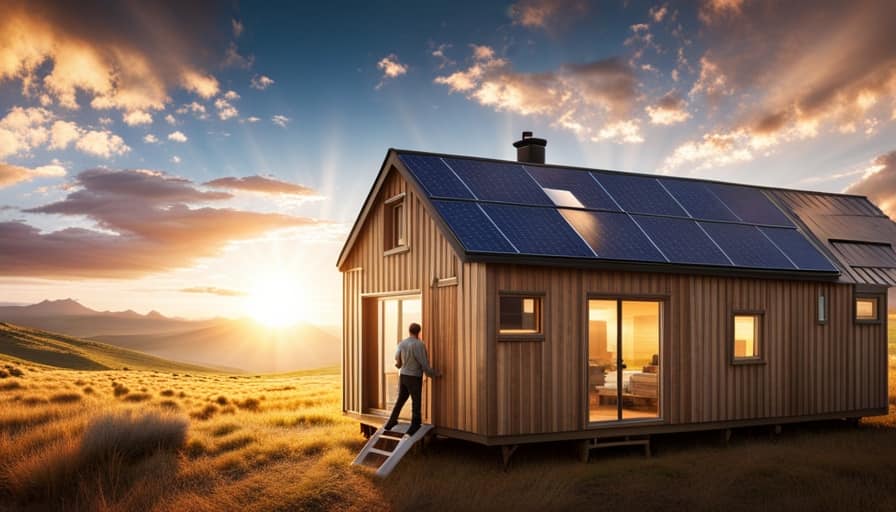
Innovative Tiny House Communities in Fresno
One innovative approach to creating tiny house communities in Fresno is through the use of sustainable materials and renewable energy sources. These communities are designed with a focus on sustainability, incorporating features such as solar panels, rainwater harvesting systems, and energy-efficient appliances. By utilizing these sustainable practices, residents can reduce their carbon footprint and live in homes that are environmentally friendly.
Additionally, these communities aim to provide affordable living options for individuals who may not be able to afford traditional housing. Through the use of smaller, more efficient spaces, the cost of construction and maintenance is reduced, making it more accessible for those on a limited budget.
These innovative tiny house communities in Fresno are paving the way for sustainable housing and promoting affordable living for all.
Transitioning into the next section, let’s explore the challenges faced in building a tiny house movement.
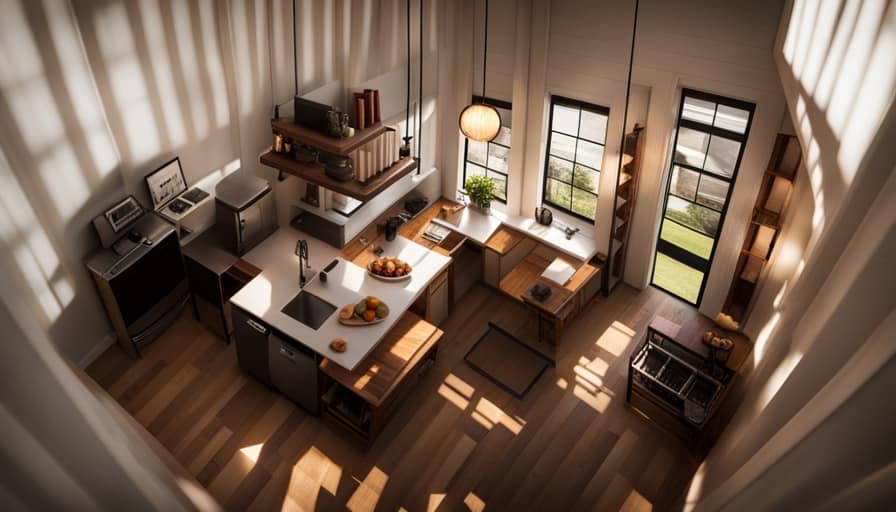
Overcoming Challenges and Building a Tiny House Movement
Confronting obstacles and working together, we can create a thriving tiny house movement in Fresno.
To overcome challenges and build a sustainable and affordable housing solution, we must first address zoning regulations. Currently, many cities have restrictions that make it difficult to build tiny houses on a permanent foundation. By advocating for changes in zoning laws, we can create more opportunities for tiny house communities.
Additionally, we need to address financing options for individuals interested in building tiny houses. Traditional lending institutions may not provide loans for these unconventional homes, so alternative financing options must be explored. Collaborating with local government, community organizations, and financial institutions can help us develop innovative solutions to overcome these challenges.
Frequently Asked Questions
How Long Does It Typically Take to Build a Tiny House?
Typically, it takes around 2-4 months to build a tiny house. The building timeline can vary based on factors like design complexity, availability of materials, and contractor availability. Cost considerations include materials, labor, and permits.
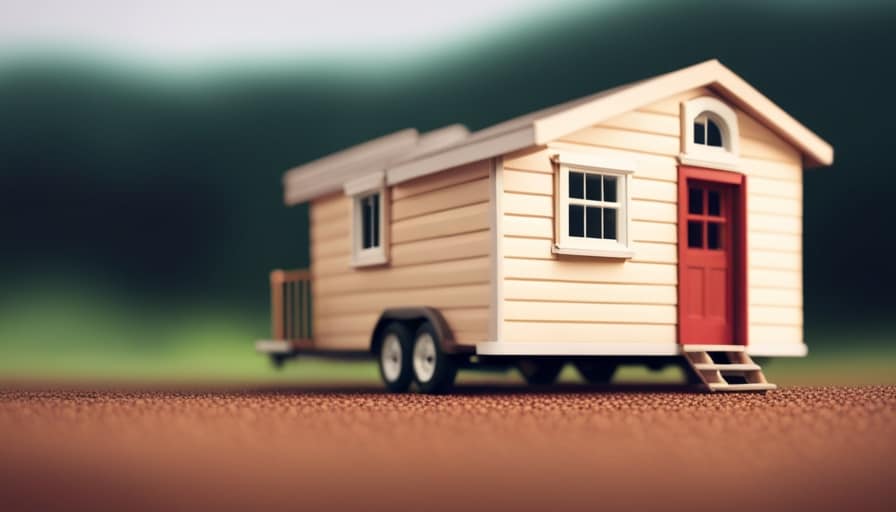
Are There Any Specific Requirements for the Size or Design of a Tiny House in Fresno?
In Fresno, specific requirements exist for the size and design of tiny houses. The city has set guidelines to ensure safety and conformity. Meeting these requirements is crucial to obtaining necessary permits and building a legally compliant tiny house.
Can I Legally Live in a Tiny House on Wheels in Fresno?
Yes, you can legally live in a tiny house on wheels in Fresno. While specific regulations may vary, other cities have implemented tiny house regulations with benefits such as affordability, sustainability, and minimal environmental impact.
How Can I Find Resources and Support for Building My Own Tiny House in Fresno?
Finding local workshops and connecting with tiny house builders in Fresno is crucial for building my own tiny house. Through thorough research and analytical thinking, I can discover resources and support to ensure a successful project.
Are There Any Financial Incentives or Grants Available for Individuals Interested in Building a Tiny House in Fresno?
There are financial assistance programs and grants available for individuals interested in building a tiny house in Fresno. It’s important to familiarize yourself with the building regulations and requirements to ensure compliance.

Conclusion
In conclusion, the city of Fresno has successfully embraced the tiny house movement through a shift in housing policies, collaboration with advocates, and innovative communities.
The zoning regulations and permitting processes have been streamlined to accommodate tiny house living. Despite challenges, the city has built a strong foundation for the tiny house movement to thrive.
As the saying goes, "The journey of a thousand miles begins with a single step," and Fresno has taken that step towards a more sustainable and affordable housing solution.
I’m Theodore, and I love tiny houses. In fact, I’m the author of Tiny House 43, a book about tiny houses that are also tree houses. I think they’re magical places where imaginations can run wild and adventures are just waiting to happen.
While tree houses are often associated with childhood, they can be the perfect adult retreat. They offer a cozy space to relax and unwind, surrounded by nature. And since they’re typically built on stilts or raised platforms, they offer stunning views that traditional homes simply can’t match.
If you’re looking for a unique and romantic getaway, a tree house tiny house might just be the perfect option.
Beginners Guides
How Do I Get Rid of Tiny Black Flies in My House
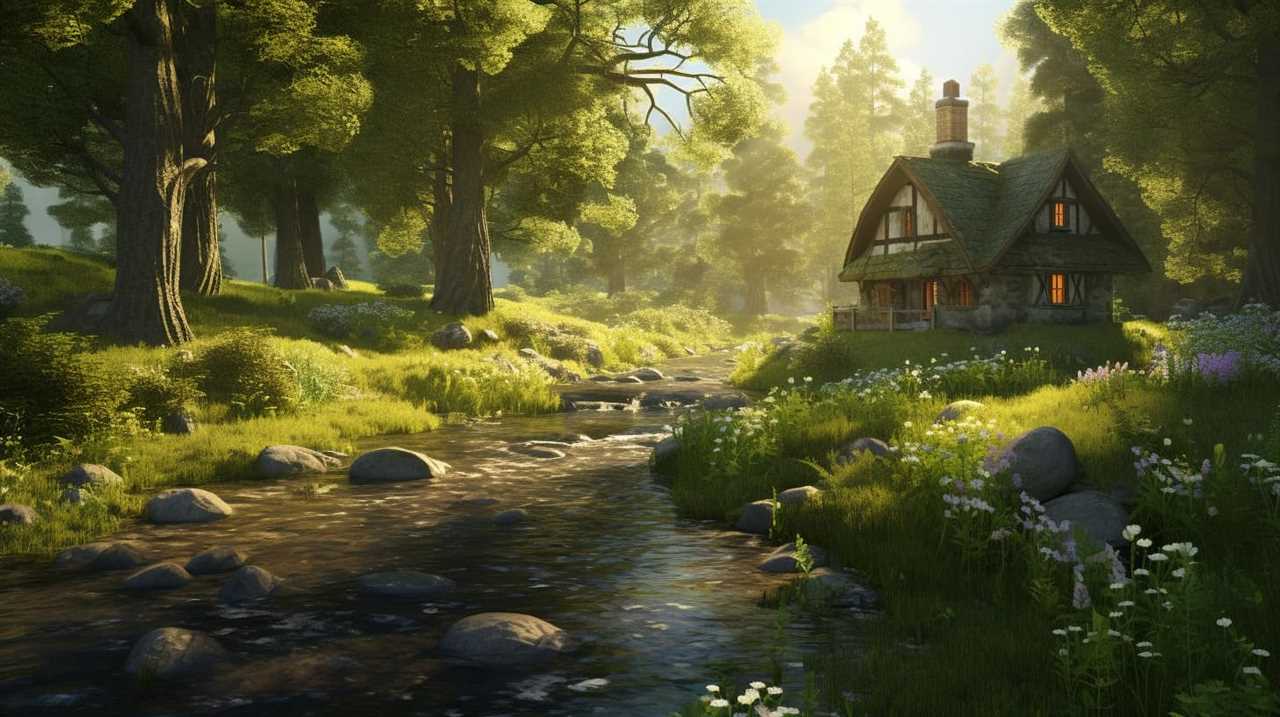
- Health risks associated with tiny black flies in the house
- Effective methods to prevent and control the presence of black flies in homes or gardens
I have tried every possible solution, but those annoying tiny black flies refuse to leave my house!
If you’re dealing with the same frustrating problem, don’t worry – I’ve got you covered.
In this article, I’ll share my expert knowledge on identifying these pesky bugs, understanding the causes of their infestations, and provide you with both natural and chemical remedies to banish them for good.
Say goodbye to those annoying flies and hello to a fly-free home!
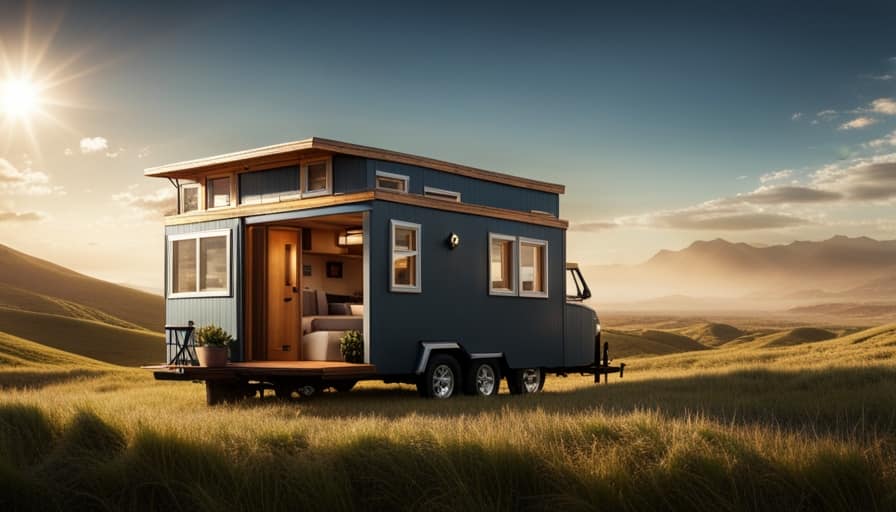
Key Takeaways
- Identify and eliminate breeding grounds by removing standing water and damp areas.
- Use natural remedies like homemade fly traps with apple cider vinegar and essential oils to repel flies.
- Consider using chemical treatments designed to kill black flies, following the instructions carefully.
- Take preventive measures to keep your house clean and free from food or organic debris to prevent future infestations.
Identifying the Tiny Black Flies
I can use a magnifying glass to examine the tiny black flies and determine their species. When it comes to differentiating between fruit flies and black flies, there are a few key characteristics to look out for.
Fruit flies are usually smaller in size, about 1/8 of an inch long, and have a tan or yellowish body with red eyes. On the other hand, black flies are slightly larger, measuring around 1/4 of an inch, and have a dark black or grayish body with dark wings.
Now, let’s move on to controlling and eliminating black flies in outdoor spaces. One effective method is to eliminate their breeding grounds by removing any standing water or damp areas where they can lay their eggs. Regularly emptying and cleaning birdbaths, flower pots, and gutters can help prevent black fly infestations.
Additionally, using insect repellents or installing fine mesh screens on doors and windows can provide some protection against these pesky pests.
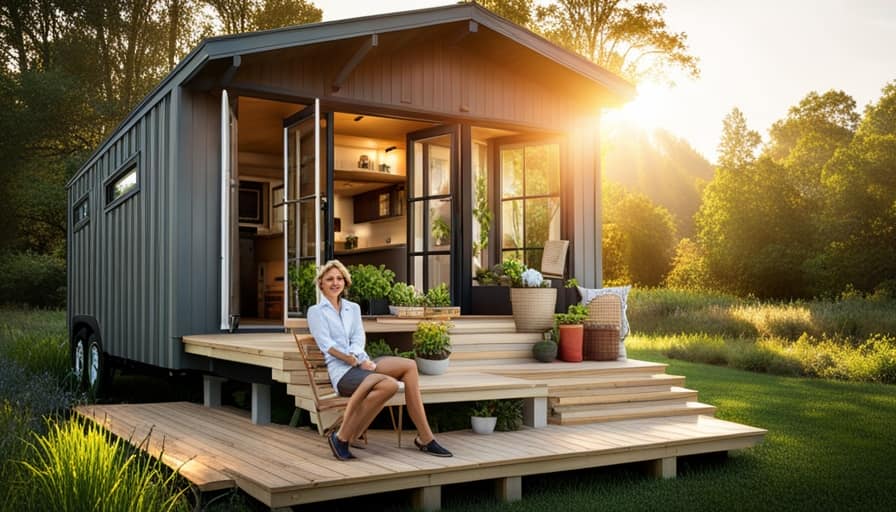
Understanding the Causes of Black Fly Infestations
To understand the causes of black fly infestations, we need to examine their preferred breeding sites and environmental conditions. These tiny pests thrive in moist and decaying organic matter, making the following places common breeding grounds for black flies:
-
Standing water: Black flies lay their eggs in standing water, such as ponds, lakes, and even puddles. It’s crucial to eliminate any stagnant water sources around your house to prevent infestations.
-
Overgrown vegetation: Black flies are attracted to dense vegetation, especially if it’s near water bodies. Trim shrubs, mow your lawn regularly, and remove any overgrown plants to discourage black flies from breeding.
-
Moist organic matter: Black flies lay their eggs in decomposing leaves, grass clippings, and other organic debris. Keep your yard clean and free of debris to reduce the likelihood of black fly infestations.

Understanding these common breeding grounds can help you identify and eliminate the causes of black fly infestations, keeping your home fly-free and comfortable.
Natural Remedies to Eliminate Tiny Black Flies
With a combination of proper sanitation and natural remedies, you can effectively eliminate tiny black flies from your house. One effective natural remedy is making homemade fly traps. These traps can be made using common household items such as apple cider vinegar, dish soap, and a plastic bottle. Simply cut the bottle in half, pour a mixture of apple cider vinegar and dish soap into the bottom half, and place the top half of the bottle inverted into the bottom half. The flies will be attracted to the scent of the vinegar, but the dish soap will prevent them from escaping. Another natural remedy is using essential oils for fly control. Oils such as lavender, peppermint, and eucalyptus have strong scents that repel flies. Simply mix a few drops of your chosen oil with water and spray it around areas where flies are present. By incorporating these natural remedies into your fly control routine, you can effectively get rid of tiny black flies in your house.
| Homemade Fly Traps | Essential Oils for Fly Control |
|---|---|
| – Apple cider vinegar and dish soap mixture in a plastic bottle | – Lavender, peppermint, and eucalyptus oils |
| – Flies are attracted to the vinegar scent but trapped by the soap | – Mix a few drops with water and spray in affected areas |
| – Simple and cost-effective solution | – Oils have strong scents that repel flies |
| – Dispose of trapped flies regularly | – Repeat application as needed |
Chemical Treatments for Getting Rid of Black Flies
By using chemical treatments, you can effectively eliminate black flies from your house. Here are three options to consider:
-
Chemical insecticides: These products are specifically designed to kill insects, including black flies. Look for insecticides that are labeled for use against flies and follow the instructions carefully. Apply the insecticide in areas where black flies are commonly found, such as around windows, doors, and other entry points.

-
Fly traps: There are chemical-based fly traps available that attract and capture black flies. These traps use a combination of chemicals and pheromones to lure the flies in and prevent them from escaping. Place the traps in areas where black flies are present, such as near garbage cans or in the kitchen.
-
Professional exterminator: If you’re dealing with a severe infestation or if chemical treatments haven’t been effective, it may be best to call a professional exterminator. They have access to stronger chemicals and can provide a targeted approach to eliminate black flies from your house.
Remember to always read and follow the instructions on chemical insecticides and traps, and consider the help of a professional if needed.
Preventing Future Infestations of Tiny Black Flies
My best advice for preventing future infestations of tiny black flies in my house is to maintain proper sanitation and eliminate potential breeding grounds.
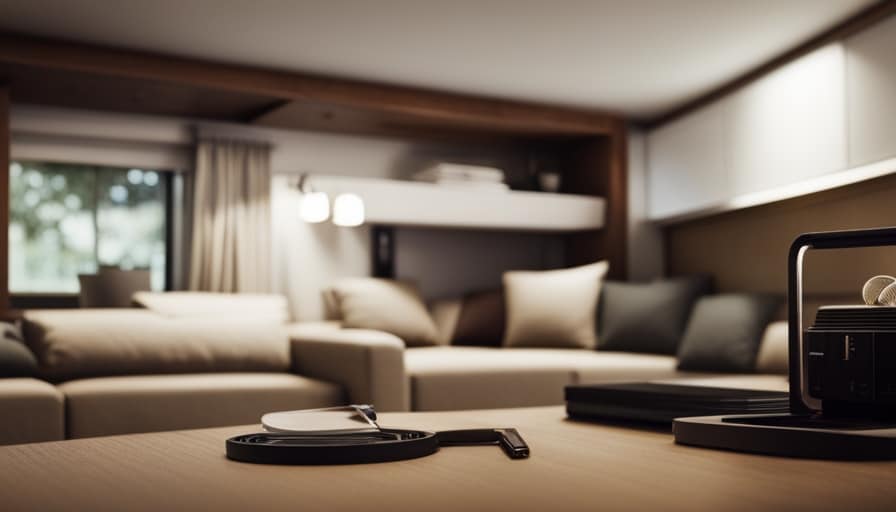
To maintain a fly-free environment, it’s important to keep your house clean and free from any food or organic debris. Make sure to regularly clean your kitchen, especially the countertops, sinks, and garbage disposal areas. Keep all food stored in airtight containers and promptly clean up any spills or crumbs.
Additionally, it’s crucial to identify and eliminate common breeding grounds for black flies in homes. These include standing water, damp areas, and overwatered plants. Regularly check for any leaks or moisture issues and fix them promptly.
Frequently Asked Questions
Can These Tiny Black Flies Harm Humans or Pets?
I’m not an expert, but I can share that tiny black flies in the house might be annoying, but they usually don’t harm humans or pets. It’s always a good idea to take preventive measures to control their presence.
Are There Any Specific Regions or Climates Where These Black Flies Are More Common?
In certain regions and climates, these pesky black flies tend to be more common. Understanding their preferences can help in devising effective strategies to keep them at bay.
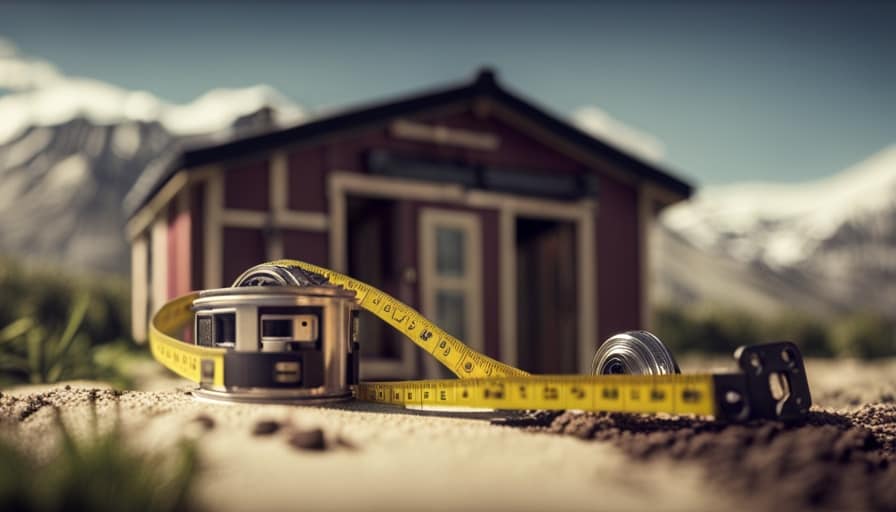
Can These Tiny Black Flies Cause Damage to Plants or Food?
Yes, these tiny black flies can cause damage to indoor plants as they lay their eggs in the soil. They can also contaminate stored food by landing on it and leaving behind bacteria.
How Long Does It Usually Take for Natural Remedies to Effectively Eliminate Black Flies?
On average, natural remedies can effectively eliminate black flies within a few days. However, the exact time may vary depending on the severity of the infestation and the specific remedies used.
Are There Any DIY Traps or Baits That Can Be Used to Catch and Eliminate These Tiny Black Flies?
There are several DIY fly traps and effective baits that can be used to catch and eliminate those pesky tiny black flies. Let me share some knowledge and details on how you can tackle this issue.
Conclusion
So there you have it, a plethora of methods to bid farewell to those pesky tiny black flies that have invaded your humble abode.
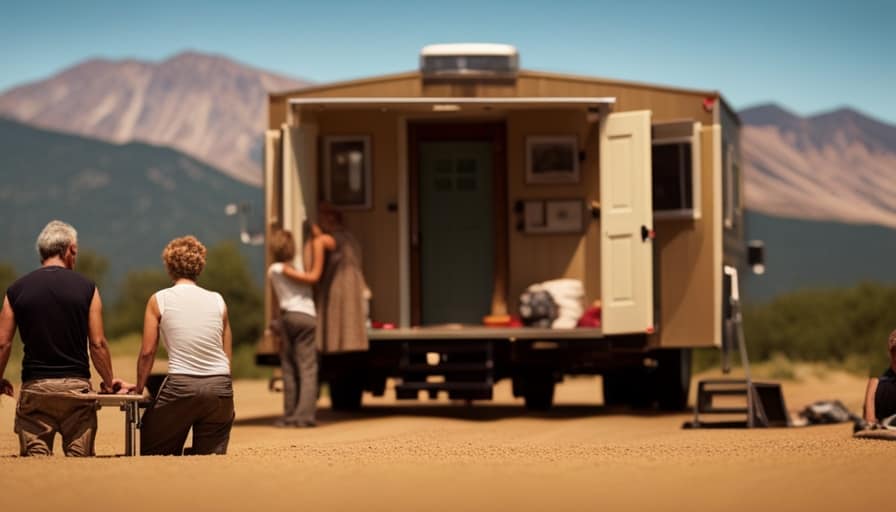
From natural remedies to chemical treatments, we’ve covered it all.
Now, armed with this knowledge, you can take control of your home and ensure these unwelcome guests never return.
Happy fly-free living!
I’m Theodore, and I love tiny houses. In fact, I’m the author of Tiny House 43, a book about tiny houses that are also tree houses. I think they’re magical places where imaginations can run wild and adventures are just waiting to happen.
While tree houses are often associated with childhood, they can be the perfect adult retreat. They offer a cozy space to relax and unwind, surrounded by nature. And since they’re typically built on stilts or raised platforms, they offer stunning views that traditional homes simply can’t match.
If you’re looking for a unique and romantic getaway, a tree house tiny house might just be the perfect option.
Beginners Guides
How Do I Get Rid of Tiny Bugs in My House

I have pests in my home that are causing me frustration! They are like small intruders that are appearing all over the place. However, do not worry, as I have conducted thorough research and found effective solutions to eliminate these bothersome pests.
In this article, I’ll guide you through identifying the types of bugs, understanding the causes of infestations, and providing natural and chemical remedies to eliminate them.
Say goodbye to those unwelcome guests and hello to a bug-free home!
Key Takeaways
- Identifying the specific pest by observing droppings or behavior is crucial in getting rid of tiny bugs in the house.
- Proper sanitation practices, such as keeping the kitchen and dining areas clean, are important in preventing bug infestations.
- Natural remedies like herbal insecticides and essential oils can be effective in deterring bugs without the use of harsh chemicals.
- Regular cleaning, sealing cracks, and maintaining a tidy home are essential in preventing future bug infestations.
Identifying the Types of Tiny Bugs in Your House
I can easily identify the types of tiny bugs in my house by observing their physical characteristics and behavior. One of the most common signs of an infestation is the presence of droppings or excrement. Different types of bugs leave different types of droppings, which can help determine the specific pest in your house.
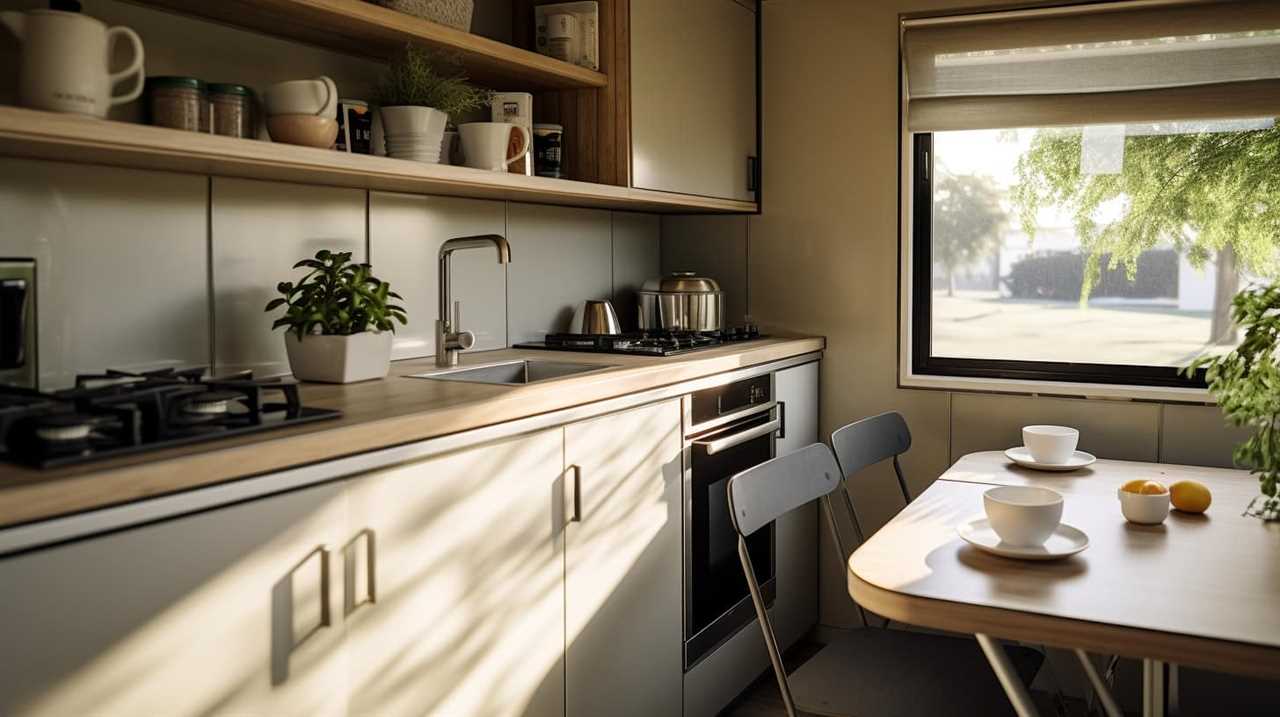
Additionally, observing the behavior of the bugs can provide valuable information. Some bugs are more active during the day, while others are nocturnal. Some bugs may prefer certain areas of the house, such as the kitchen or bathroom.
If you’re unsure about the type of bug in your house, it’s advisable to consult with professional exterminators who’ve the expertise to accurately identify and eliminate the pests.
Understanding the Common Causes of Bug Infestations
One of the most common causes of bug infestations is a lack of proper sanitation practices in the home. Understanding bug behavior and knowing their common household bug habitats can help prevent infestations.
Bugs are attracted to food sources, so it’s important to keep the kitchen and dining areas clean and free of crumbs and spills. Regularly emptying and cleaning garbage cans can also deter bugs from entering the home.

Additionally, bugs thrive in warm and moist environments, so it’s important to fix any leaks or damp areas in the house. Cluttered spaces provide hiding spots for bugs, so keeping the home organized and decluttered can help minimize their presence.
Natural Remedies to Get Rid of Tiny Bugs in Your House
To effectively eliminate tiny bugs in your house, try using natural remedies with ingredients such as vinegar and essential oils. Natural remedies are a great option for those who prefer non-toxic solutions and want to avoid harsh chemicals.
One effective natural remedy is using herbal insecticides. These insecticides are made from plant-based ingredients and can be sprayed in areas where bugs are commonly found, such as corners, cracks, and crevices.
Another natural remedy to consider is essential oils. Certain essential oils, such as peppermint, lavender, and tea tree oil, have insect-repellent properties. Simply mix a few drops of the essential oil with water and spray it around your house to deter bugs.
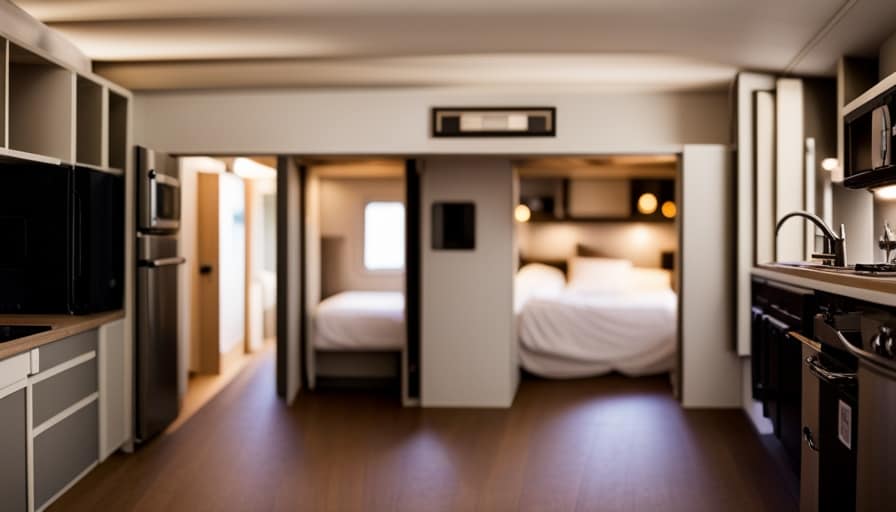
These natural remedies can be a safe and effective way to get rid of tiny bugs in your house.
Chemical Treatments for Eliminating Tiny Bugs
There are several effective chemical treatments available to eliminate tiny bugs in your house. When it comes to pest control methods, using insecticides is a common and efficient approach. There are various types of insecticides on the market, each with its own advantages and disadvantages.
It’s important to compare different insecticides to determine which one is best suited for your needs. Some insecticides target specific bugs, while others have a broad spectrum of effectiveness. Additionally, consider the application method and the duration of effectiveness. Some insecticides require direct contact with the bugs, while others can be used as a residual treatment.
It’s also essential to follow the safety instructions provided by the manufacturer when using chemical treatments to ensure the well-being of both humans and pets in your home.

Preventing Future Bug Infestations in Your Home
I’ll make sure to regularly clean and seal any cracks in my house to keep bugs from coming in. Effective cleaning techniques are crucial in preventing bug infestations and creating a bug-free environment. Maintaining a clean and tidy home is essential to minimize the presence of bugs. Regularly vacuuming carpets and upholstery, sweeping and mopping floors, and wiping down surfaces will help eliminate any crumbs or food particles that may attract bugs. Additionally, proper food storage is essential to prevent bugs from being attracted to your kitchen. Keeping food in sealed containers and promptly cleaning up spills or crumbs will deter bugs from entering your home. Regularly inspecting and repairing any cracks or gaps in windows, doors, and walls will also help prevent bugs from finding their way inside.
| Cleaning Techniques | Maintenance Tips |
|---|---|
| Vacuum carpets and upholstery | Inspect and repair cracks or gaps |
| Sweep and mop floors | Properly store food to deter bugs |
| Wipe down surfaces | Regularly clean and seal cracks |
| Dispose of trash regularly | Keep a tidy and clutter-free home |
Frequently Asked Questions
Can These Tiny Bugs Cause Any Harm to Humans or Pets?
I’m not sure about the specific bugs in your house, but some tiny bugs can cause harm to humans or pets. It’s important to address the bug infestation promptly to protect your health and take preventive measures to keep them out.
How Long Does It Typically Take for Natural Remedies to Effectively Get Rid of Tiny Bugs?
It typically takes a few weeks for natural remedies to effectively eliminate tiny bugs. However, it’s important to note that results may vary. As for side effects, natural remedies are generally safe for humans and pets.
What Are Some Signs That Indicate a Bug Infestation in the House?
Signs of a bug infestation in the house include seeing live or dead bugs, finding their droppings or eggs, and noticing damage to furniture or walls. Preventing bug infestations involves keeping a clean and tidy home, sealing entry points, and using insect repellents.
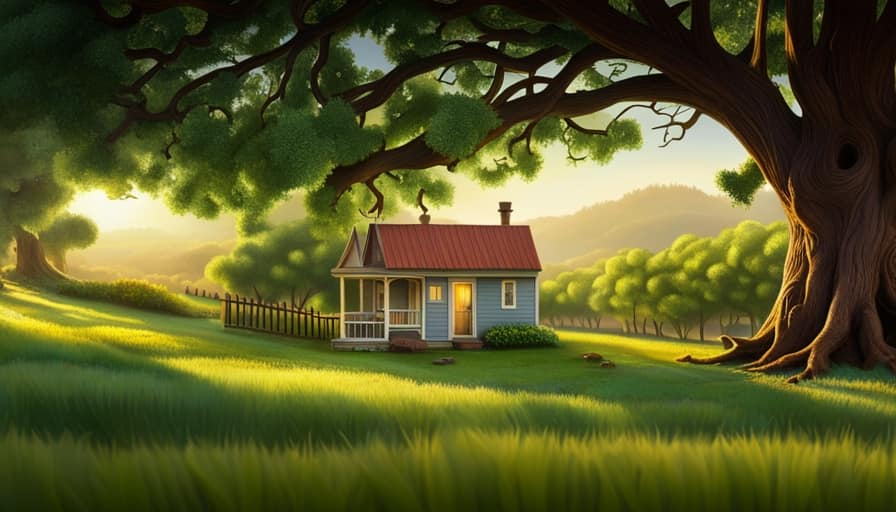
Are There Any Specific Areas in the House Where These Tiny Bugs Are Commonly Found?
In my experience, tiny bugs tend to hide in common areas like kitchen cabinets, bathrooms, and near windows. To prevent them, I recommend regular cleaning, sealing cracks, and keeping food stored properly.
Can Certain Weather Conditions or Changes in the Environment Attract These Tiny Bugs Into the House?
Certain weather conditions or changes in the environment can attract these tiny bugs into the house. Factors like warm and humid weather, open windows, and presence of organic matter can make your home more inviting for them.
Conclusion
In conclusion, while it can be frustrating to deal with tiny bugs in your house, there are effective ways to get rid of them.
By identifying the types of bugs and understanding the common causes of infestations, you can take natural or chemical treatments to eliminate them.

Additionally, taking preventive measures can help to avoid future bug infestations.
Remember, with the right knowledge and strategies, you can create a bug-free environment in your home.
I’m Theodore, and I love tiny houses. In fact, I’m the author of Tiny House 43, a book about tiny houses that are also tree houses. I think they’re magical places where imaginations can run wild and adventures are just waiting to happen.
While tree houses are often associated with childhood, they can be the perfect adult retreat. They offer a cozy space to relax and unwind, surrounded by nature. And since they’re typically built on stilts or raised platforms, they offer stunning views that traditional homes simply can’t match.
If you’re looking for a unique and romantic getaway, a tree house tiny house might just be the perfect option.
-
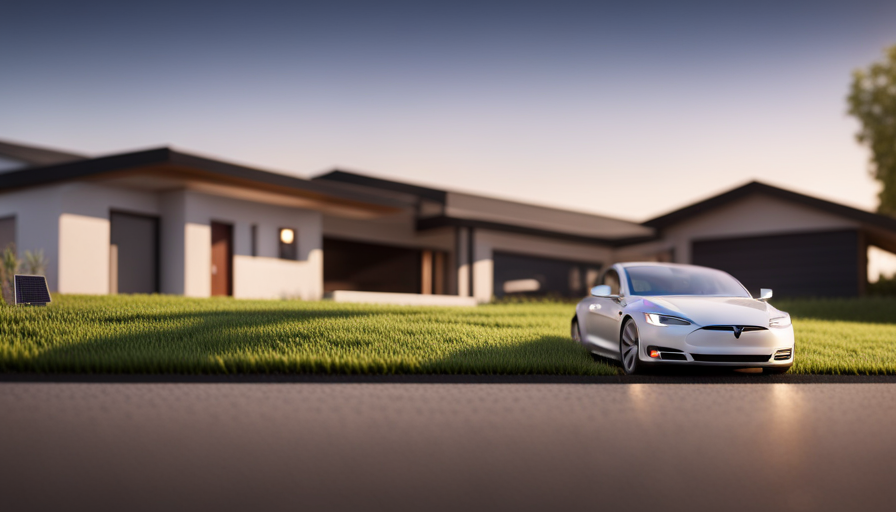
 Beginners Guides2 weeks ago
Beginners Guides2 weeks agoHow To Buy A Tesla Tiny House
-
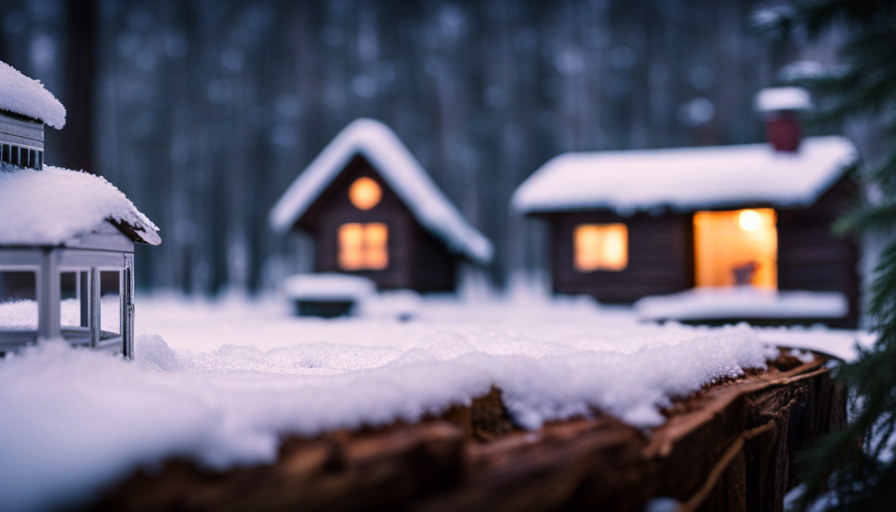
 Energy Efficiency2 months ago
Energy Efficiency2 months agoBest Tiny Homes For Cold Climates
-
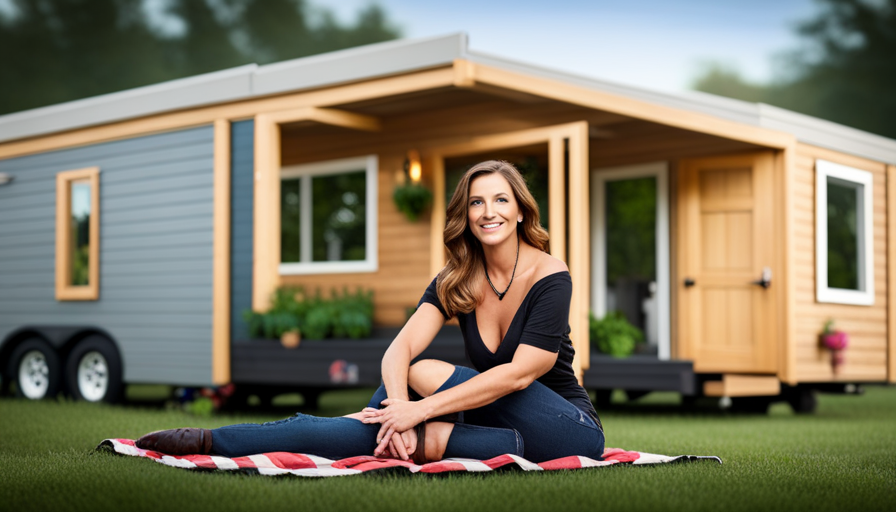
 Beginners Guides1 week ago
Beginners Guides1 week agoTiny House Nation Where Are They Now Stephanie
-
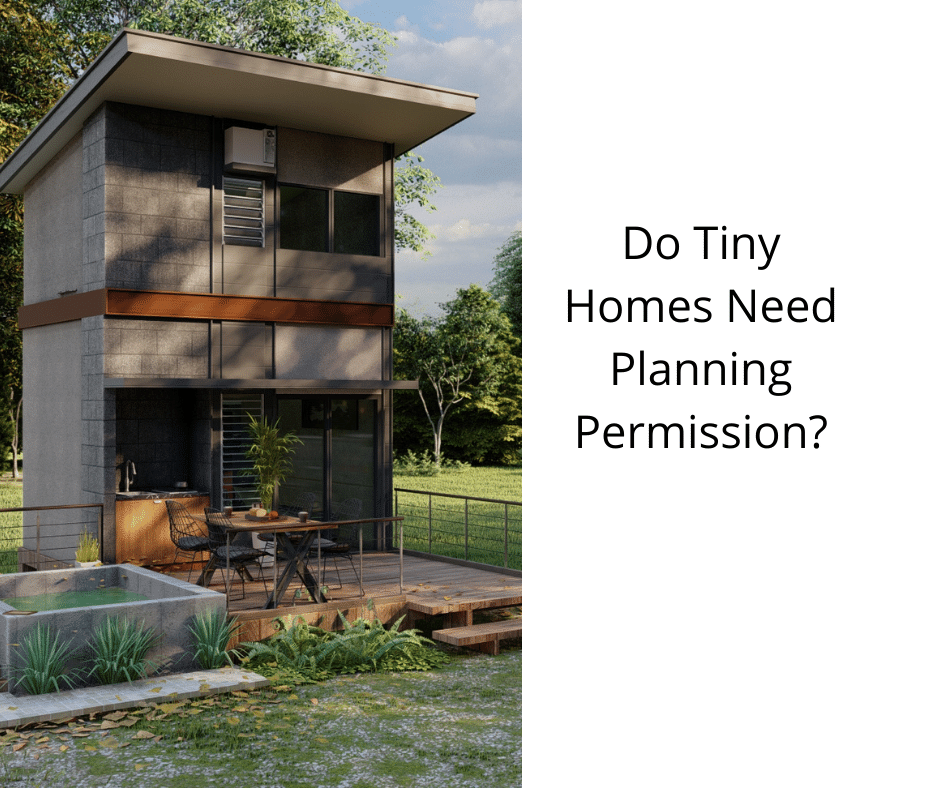
 Tiny House Resources (e.g., legalities, cost, insurance, FAQs)2 months ago
Tiny House Resources (e.g., legalities, cost, insurance, FAQs)2 months agoDo Tiny Homes Need Planning Permission?
-
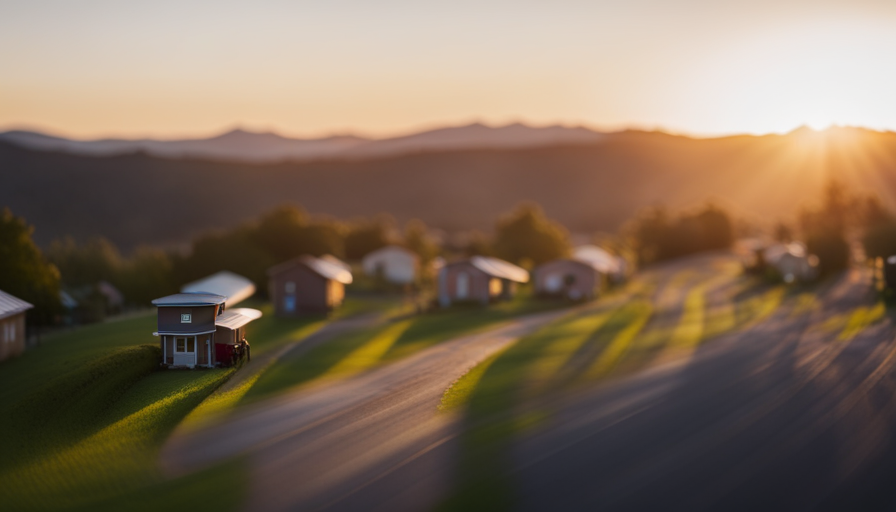
 Beginners Guides3 weeks ago
Beginners Guides3 weeks agoFrom The Show Tiny House Nation How Many Keep Their Tiny House?
-
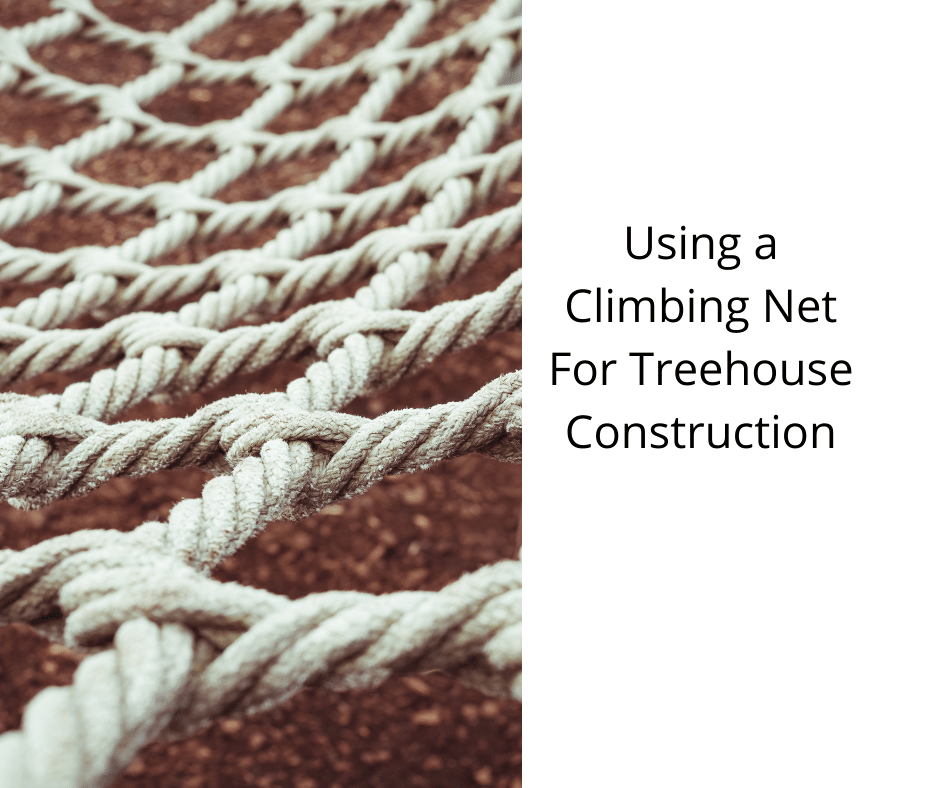
 Beginners Guides2 months ago
Beginners Guides2 months agoUsing a Climbing Net For Treehouse Construction
-
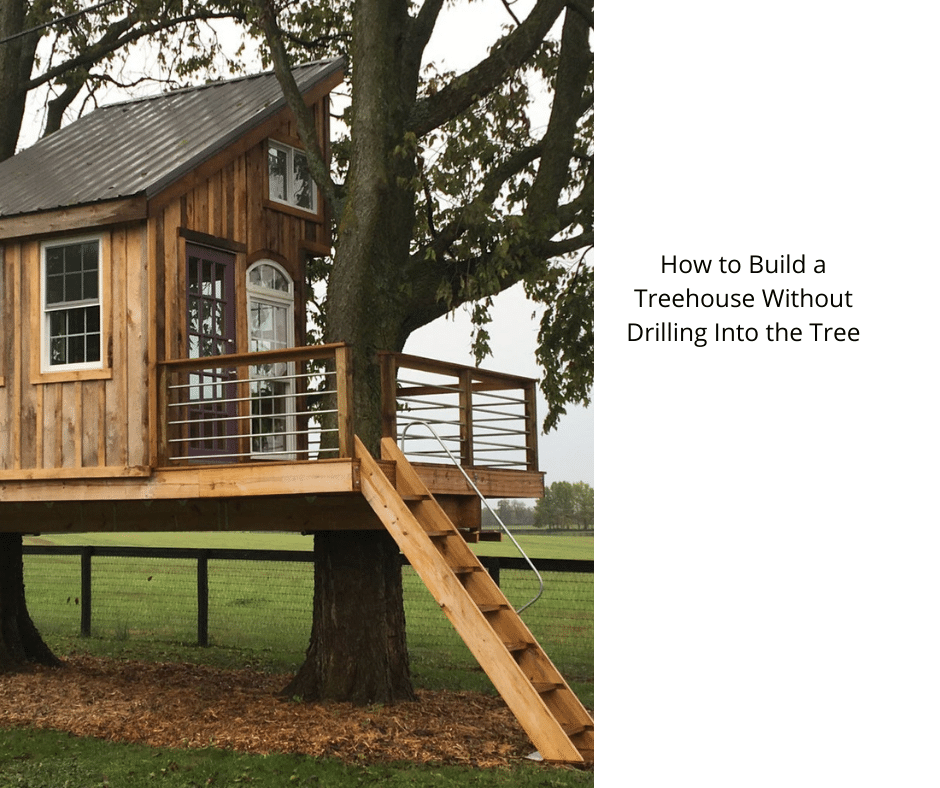
 Beginners Guides2 months ago
Beginners Guides2 months agoHow to Build a Treehouse Without Drilling Into the Tree
-
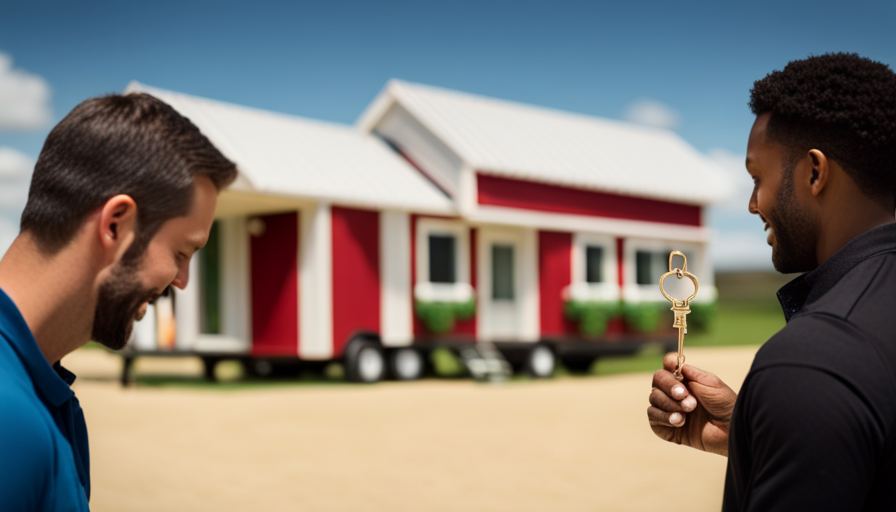
 Beginners Guides3 weeks ago
Beginners Guides3 weeks agoTiny House Nation Who Pays For The Houses




